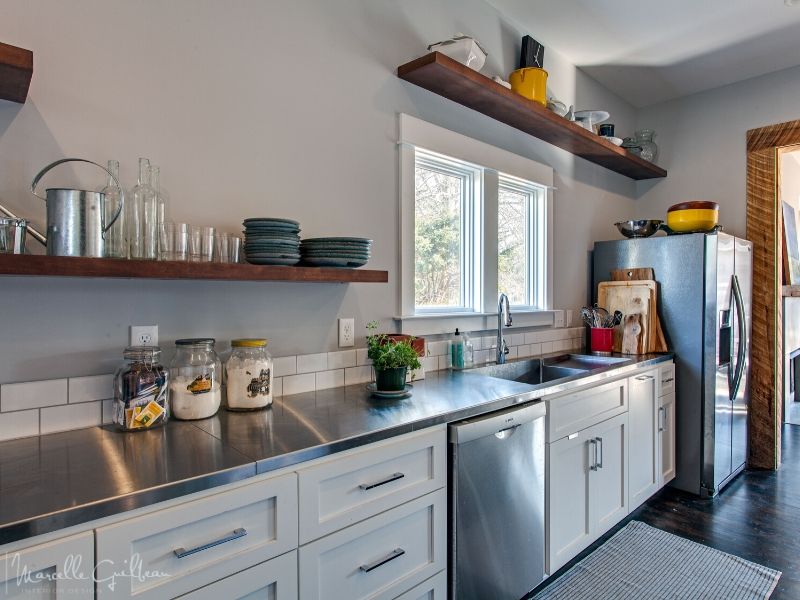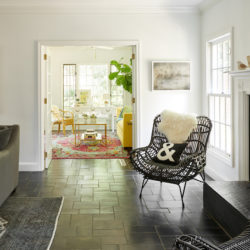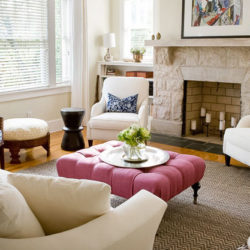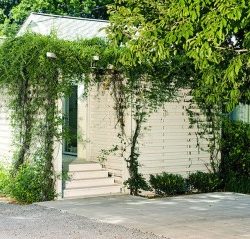 With all the headlines about global climate change, it’s good to know what one can do about it that is easy and within reach. When I studied for LEED Accreditation, I discovered there are three things that have the biggest impact on the environment: Building materials, heating and cooling, and lighting. It’s easy to see what things are made of, and most of us know that if it’s plastic, then it adds to the carbon footprint. But what is not so obvious is that even natural a material, such as metal or stone or wood, which is harvested from far away and requires treatment before it is ready for use, still creates a carbon footprint generated from its fabrication and transportation. Even less obvious is the amount of energy which is eaten up by heating and cooling, and lighting. Today, our guest blogger Thea shares with you some simple, yet super impactful ways to green up your home.
With all the headlines about global climate change, it’s good to know what one can do about it that is easy and within reach. When I studied for LEED Accreditation, I discovered there are three things that have the biggest impact on the environment: Building materials, heating and cooling, and lighting. It’s easy to see what things are made of, and most of us know that if it’s plastic, then it adds to the carbon footprint. But what is not so obvious is that even natural a material, such as metal or stone or wood, which is harvested from far away and requires treatment before it is ready for use, still creates a carbon footprint generated from its fabrication and transportation. Even less obvious is the amount of energy which is eaten up by heating and cooling, and lighting. Today, our guest blogger Thea shares with you some simple, yet super impactful ways to green up your home.
Thea Clarice is passionate about sustainability in the home. While today she is speaking for the Practicalist, the Sensualists among us will enjoy exploring natural materials themselves, which Thea touches on. However, I agree that our Practicalists will always be the ones to remind us about the purpose and impact of things, whether we can see them and feel them or not. Her discussion of easy ways to super-insulate your home, as well as to reduce the light bill, are both timely and important.
– Marcelle Guilbeau
The Practicalists’ Guide to a Sustainable Home…
It’s safe to say that sustainability is one of the biggest trends of late, and with good reason. Because of widespread air, water, and land pollution, The United Nations reveals that the earth’s rich biodiversity is in severe danger. However, there’s still time to foster effective changes to help our environment. A fantastic way to protect and heal Mother Earth, our home, is to make your own home’s design more sustainable.
If you’re a practicalist, you are in luck — sustainability speaks to your soul style. After all, you do not take things for granted and value the purpose of each and every thing. You can use your deep appreciation for function to give the elements of your home a sustainable upgrade. That said, here’s how to design a sustainable home that aligns with your practical style.
Recycling Options…
Rustic Industrial design – Reclaimed wood open shelves
Recycling is always a prime way to practice sustainability. Yet, there’s more to recycling than properly disposing waste in the recycling bin, as you also have the option of breathing new life to broken pieces of furniture or finding new and innovative uses for found materials. That’s because disposing of things you can still use only accelerates climate change, and National Geographic’s report on primary greenhouse gases notes that burning wood results in the release of even more carbon dioxide into the atmosphere.
In our interview with Eternal Returns’ Keegan Fioravanti, he shared with us that reclaiming wood is a powerful sustainable practice as it both restores and enhances damaged or disregarded wooden material. Whether it’s restoring your countertops or installing open kitchen shelves, reclaiming wood is a wonderful way to give materials a functional and sustainable revamp.
Upgrade Your Home’s Insulation…
Insulation is key for a functional home. Not only does it provide you with the warmth you’ll need during the winter, but it also saves you money by lessening heating costs. Proper insulation makes your home more sustainable, as it helps reduce the amount of air and warmth that escapes from your house.
In this regard, insulating your home’s walls is your best bet, as it can prevent heat loss by up to 90%. HomeServe’s guide to wall insulation explains that there are three types of material that can help you insulate your walls: urea-formaldehyde, mineral wool, and expanded polystyrene beads. The choice of insulation depends on what type of walls you have and what sort of climate you live in, which is why it’s best to consult with a professional before beginning the process.
Make the Switch to LED Lights…
As a practicalist, you know the importance of having a well-lit home, as good lighting makes your rooms feel more spacious and of course, helps you see things clearer. But did you know that this type of light plays a vital role in keeping your home environmentally friendly? If your light bulbs are incandescent or fluorescent, they use up more energy and can further damage the environment due to their mercury content.
LED light bulbs are the best option for a sustainable home, as they don’t have any harmful chemicals. Plus, they also use less electricity, producing more light than heat. But since you’re a practicalist, you’ll need an LED color that will give your home a warm glow. CNET shares that among the variety of LED colors, ‘warm white’ generates a soft hue that’ll fit well with your soul style.
Written exclusively for marcelleguilbeau.com, By Thea Clarice – Guest Blogger
 Thea Clarice is a blogger and software developer currently based in Austin, Texas. With a passion for sustainability, she is fascinated by the ways in which modern technology can help solve some of the world’s most pressing environmental challenges — She is an advocate of leveraging these technologies in our homes and communities. Thea began blogging in 2018 as a way to offer her voice to environmental solutions. And when she’s not working, she enjoys urban gardening and yoga. You can follow Thea her on Twitter
Thea Clarice is a blogger and software developer currently based in Austin, Texas. With a passion for sustainability, she is fascinated by the ways in which modern technology can help solve some of the world’s most pressing environmental challenges — She is an advocate of leveraging these technologies in our homes and communities. Thea began blogging in 2018 as a way to offer her voice to environmental solutions. And when she’s not working, she enjoys urban gardening and yoga. You can follow Thea her on Twitter








